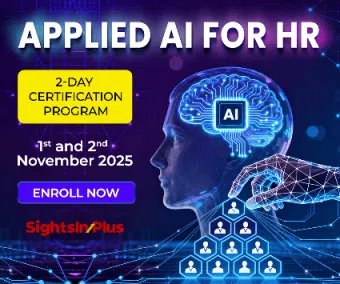In today’s fast-paced, tech-enabled business world, transformation is constant, but one timeless truth remains: people power performance. Amidst complex change and hybrid work, leaders who prioritize recognition and value their teams not only drive better results, but they also shape stronger cultures.
In high-growth, high-tech environments, recognition is no longer a soft skill—it’s a leadership responsibility and strategic lever. When done well, it builds emotional connection, boosts morale, aligns teams with purpose, and propels discretionary effort. And increasingly, technology offers leaders the tools to amplify recognition at scale.
Why Recognition Must Be Led from the Top
Recognition is often misunderstood as an HR initiative or a program dependent on perks. But in truth, recognition is a culture—and culture is shaped by leadership.
In tech-driven, distributed workplaces, where employees interact more with platforms than people, leaders play a vital role in humanizing work. Their actions, words, and behaviors signal what is valued, what is celebrated, and what gets repeated.
Leaders who actively recognize their teams are not just managing people—they are shaping culture, influencing engagement, and building trust.
The Leadership Case for Recognition: What the Data Tells Us
- Gallup reports that employees who regularly receive recognition are:
- 4x more likely to be engaged
- 5x more connected to company culture
- 74% less likely to consider leaving
- Achievers Workforce Institute found that 69% of employees would work harder if they felt more appreciated—yet only 35% say they receive regular recognition.
- McKinsey & Company observed that during times of disruption, non-financial motivators like praise and appreciation often outperform financial incentives.
The message is clear: when leaders make recognition a priority, it directly impacts performance, loyalty, and culture.
How Leaders Can Build a Culture of Recognition—Backed by Technology
In high-tech, high-performance environments, recognition must be intentional, authentic, and scalable. Leaders must move beyond sporadic praise and embed recognition into the fabric of how their teams operate—enabled by technology and guided by purpose.
Here’s how:
1. Lead by Example
Recognition must cascade from the top. When senior leaders regularly appreciate individuals—through town halls, emails, digital shout-outs, or 1:1 conversations—they normalize recognition across the organization.
Leadership tip: Use video messages or internal platforms to share real-time recognition stories. Let your visibility inspire others.
2. Make Recognition Strategic
Tie recognition to organizational values, mission, and strategic goals. Leaders should spotlight behaviors that drive the business forward—whether it’s innovation, resilience, customer centricity, or collaboration.
Leadership tip: Regularly highlight team wins that demonstrate alignment with company values, not just outcomes.
3. Use Technology to Scale Recognition
Leverage digital platforms that enable instant, visible, and peer-driven recognition. These tools empower leaders to:
- Acknowledge great work in real time
- Track recognition trends across teams
- Identify unsung heroes
- Personalize appreciation using insights from analytics
Leadership tip: Set aside 10 minutes each week to review your team’s recognition dashboard—and act on it.
4. Embed Recognition into Daily Leadership Routines
Integrate recognition into:
- Team meetings (start with a shout-out)
- 1-on-1s (highlight contributions)
- Performance reviews (celebrate past wins)
Recognition shouldn’t be reserved for special occasions—it should be part of how leaders lead.
Leadership tip: Make it a goal to recognize at least one person meaningfully each week. Keep it genuine and specific.
5. Enable and Empower Your Managers
Middle managers are the bridge between strategy and execution. Equip them with tools, training, and examples to recognize their teams consistently.
Leadership tip: Create a manager recognition playbook with templates, suggested language, and best practices tailored to your culture.
6. Encourage Peer-to-Peer Recognition
Leadership should model and encourage a recognition-rich environment, where peers and cross-functional teams also celebrate one another. This builds psychological safety and inclusion.
Leadership tip: Publicly endorse and participate in peer recognition platforms. Celebrate when your team recognizes others.
7. Celebrate Progress, Not Just Perfection
Leaders should recognize learning, effort, and resilience—not just end results. This fosters a growth mindset and encourages innovation.
Leadership tip: Praise experiments, failed attempts that taught something valuable, and behind-the-scenes contributions.
8. Personalize Recognition
One-size-fits-all appreciation misses the mark. Leaders should learn what matters to their team members—some thrive on public praise, others prefer a quiet thank you or a development opportunity.
Leadership tip: Keep a short “recognition profile” for each team member—preferred method, recent milestones, values demonstrated.
9. Monitor and Adjust
Use recognition data and employee feedback to understand impact. Are certain teams under-recognized? Are some behaviors overemphasized? Leaders can course-correct in real time.
Leadership tip: Review recognition analytics quarterly and use them in team reviews or engagement sessions.
10. Make Recognition a Leadership KPI
Treat recognition not as a soft skill, but a leadership competency. Track it, measure it, and reward it. Hold leaders accountable for building recognition-rich cultures.
Leadership tip: Include recognition frequency and impact in manager scorecards or leadership 360s.
Key Additional Points:
- Avoid Tokenism: Keep Recognition Meaningful
Recognition should never become routine or rotational. When everyone is appreciated just to “take turns,” it dilutes sincerity and erodes trust. - Recognize with Intention, Not Obligation
Appreciation must be earned, not expected. Leaders must ensure that recognition is based on genuine contributions, aligned behaviors, and measurable impact—not a calendar schedule. - Quality Over Frequency
Instead of recognizing everyone monthly, focus on making each recognition moment meaningful, specific, and tied to values. A well-timed thank-you carries more weight than a predictable pattern. - Set Clear Criteria for Recognition
Establish transparent guidelines so recognition is perceived as fair, merit-based, and consistent with performance and values. This avoids perceptions of favoritism or forced equality. - Balance is Key
Recognize consistently, but not indiscriminately. Over-recognition can be just as damaging as under-recognition. Leaders must strike the right balance to preserve credibility and motivation.
Note: We are also on WhatsApp, LinkedIn, Google News, and YouTube, to get the latest news updates. Subscribe to our Channels. WhatsApp– Click Here, Google News– Click Here, YouTube – Click Here, and LinkedIn– Click Here.



